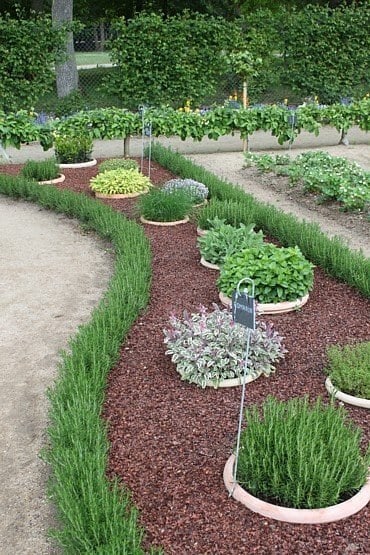
An herb garden is a great gateway into gardening. If you haven’t had much gardening experience or just don’t have a lot of time or space to create a full vegetable patch, then creating a herb garden looks like it will be just right for you. An herb garden has so many benefits. As well as providing you with delicious fresh herbs that you can use in your cooking, teas and herbal remedies, an herb garden also provides plants for bees to collect pollen from and an amazing aroma that will fill your garden. Herbs do require attention and cultivation but often once they have been going for a while they can grow a little wilder on their own. All herbs, however, do have different growing needs. Some herbs like shade, some sun and others a mixture of both. Also, their water needs and soil needs can be slightly different also. We’ll go through some of the most popular herbs you can grow in your backyard and their needs. So read below and get familiar with the different herbs and see which ones will suit you and your backyard the best.
Featured in cuisines across the globe, basil is an indispensable flavoring. Plant seeds or transplants after all danger of frost has passed and soil is warm, and it will yield an abundant harvest within weeks.
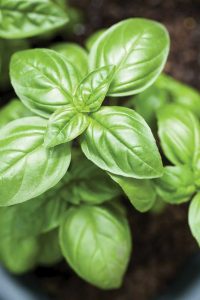 Basil
Basil
Let’s start with Basil, a fresh and aromatic herb with vivid green leaves used in a lot of Mediterranean cooking and often reminiscent of summertime! It has also been used for its medicinal products of aiding digestion and curing headaches and even mild depression.
Basil is a great herb to grow from seed. Planting in the rich fertile soil, the best times to sow are spring and summer. Basil needs at least six hours of full sun a day. It really loves soaking in the suns rays.
Keep an eye on your Basil on about the six to seven-week mark when it starts to shoot up and take the top off the plant. This will help prevent it flowering too soon and also give more energy to the side shoots so you get a nice and full looking bush.
Keep your soil warm and full of moister (just think of the Mediterranean soil!) You’ll know when it’s time to start picking your basil, small buds will start to appear and you want to get in there before it goes to seed. The great thing about basil is you can pick a little a day when you need it and then with a good prune every few months you should have a plant that goes year round.
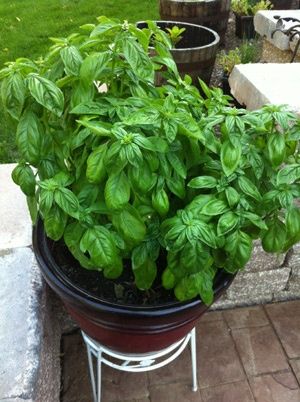
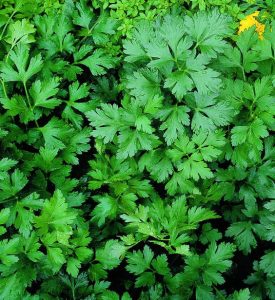 Parsley
Parsley
Parsley is a wonderfully versatile herb, used as a garnish around the world it can be adapted to many dishes. As a little sprinkling on top of a hearty winter soup, or picked in bunches for a green summer salad, parsley is a great all-rounder and filled with iron, this is a must-have herb.
The best time to grow parsley from seed is in autumn and spring. Parsley loves a little bit of shade so find a semi-shaded spot in your garden to keep it happy. Your parsley plant will tend to just grow and grow with the right conditions, but if you want to keep a good fresh flavor, try replanting it every year, by collecting the seeds in the autumn and then sewing them again in spring. Parsley is a hardy plant and like a lot of other herbs, do best in the moist and rich soil.
Cut the leaves as you need them, and you can also cut off a bunch and keep in for a few days on your kitchen bench in some water so it is right on hand for your cooking.
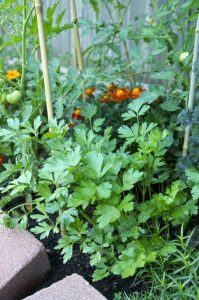
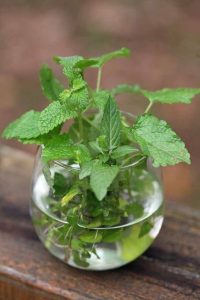 Mint
Mint
Mint is another favorite, used in so many ways for so many things. There are a few varieties of mint such as. Apple mint, Vietnamese mint, Spearmint and even Chocolate mint! Mint is perfect as a garnish in cold drinks; all the best summer cocktails have some mint in them!! It can also be used fresh or dried for hot tea that has great digestive properties and can help relieve tension, stress, and headaches. Bees and butterflies love mint and they will fill up your garden in summer.
Mint doesn’t mind the sun, and once it gets going it can really spread like wildfire through your garden, that’s why a lot of people tend to plant them in pots to keep them a bit more contained. It does not need super rich soil to grow but does like moisture. Cutting plants right back is the key. Don’t be afraid to cut off whole stems at a time, it will only help promote new growth and keep your plant thriving.
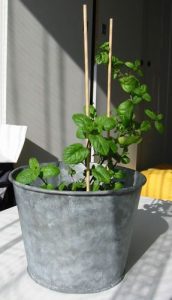
 Sage
Sage
Sage has beautiful light green leaves and a bold scent, which is both delicate and powerful. It has been used on many a Thanksgiving turkey over the years and goes well with egg and bean dishes to give them a unique taste. You can even use the blossoms in a salad! Its wonderful aroma can be smelt throughout the garden.
Sage can be planted from root cuttings as well as seeds; fresh seeds always work better when it comes to sage. Sage loves the full sun and drained soil. Once they start to grow you can ease off with the watering a little, then watch them flourish. Sage has slightly woody stems and needs to be pruned back yearly. Spring is the optimum time for this. These plants will only produce in a bountiful way for a few years a time. You may wish to consider planting another bush in the second or third year of your plant’s life to replace your original.
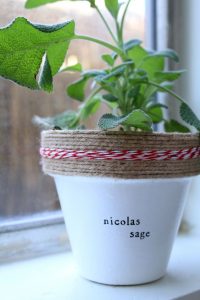

Thyme
Thyme is a bit of a creeper and likes to stay relatively close to the earth. If you put it in a pot it will end up cascading over the sides in a marvelous way. Thyme is a great addition to your kitchen and is often used in chicken dishes to compliment the flavor. It is also said to have great antifungal and antiseptic properties. The most popular thyme is English thyme and it can look beautiful simply as a decorative plant small rocky outcrops.
Another herb that likes sun; but needs protection from harsh winds. Thyme can be tricky to grow from seed, so if you are struggling it may be best to purchase seedlings from your local gardening store instead. It prefers light soil to moister rich. Trim gently during spring and summer to promote new growth, and harvest whenever you need a little flavor in the kitchen.

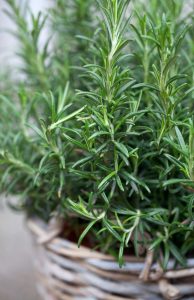 Rosemary
Rosemary
The smell of rosemary can be quite intoxicating. Its long woody stems that reach for the sky are often used in ornamental gardens and trimmed like hedges. It is often paired with lamb and many a cook has gotten creative and used the woody stem as skewers in cooking. It also does amazingly well as a garnish in drinks and can even be steeped overnight to create a wonderfully flavorsome tea.
Rosemary is another sun sucker, but once it has matured, won’t mind a bit of shade every now and again. If left to it’s own devices rosemary can spread quickly and become woodier than is useful. That’s why it’s important to give the plant a rather brutal trim in early spring and allow the leaves to really flourish.
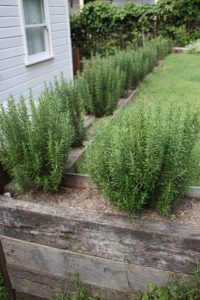
So Many Herbs
We’ve only just scratched the surface of all the wonderful herbs there are out there. Once you have chosen the herbs you like best based on smell, taste, and usefulness to you, it’s time to get creative in the way you plant them. From a vegetable style herb garden to balcony pots, here are some ideas to get your herbs looking amazing.
